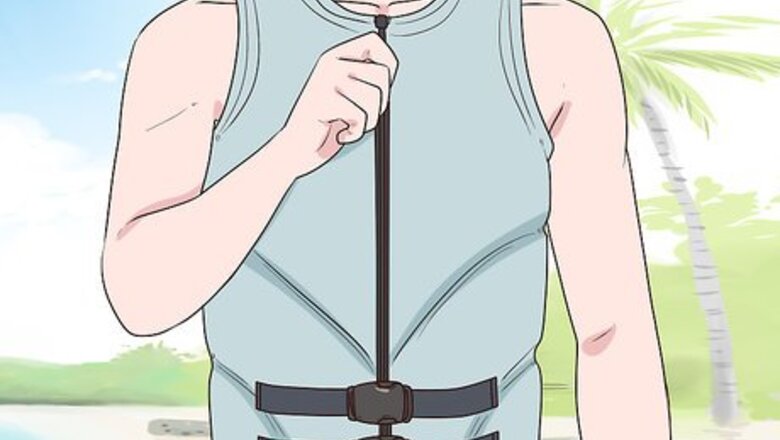
views
Getting in Position
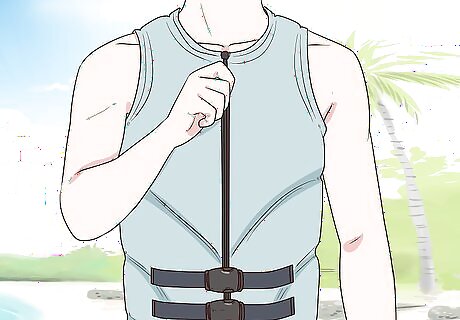
Put on a life vest. Even if you’re a seasoned swimmer, it’s essential that you wear a life vest while wakeboarding. Put one on and secure the straps before getting in the water. Familiarize yourself with the hand signals you’ll use to communicate with the driver of the boat before you get in the water. For instance, thumbs up means speed up, while thumbs down means slow down. A slash across the neck means stop the boat/cut the motor.
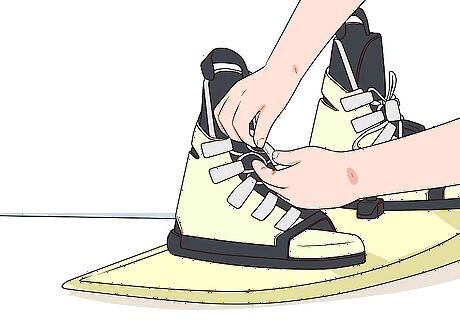
Adjust the bindings on the wakeboard. Set the bindings on the wakeboard so they feel comfortable and secure. If they’re too loose, you won’t be able to maintain your balance. If they’re too tight, your feet will hurt, taking the fun out of the sport.
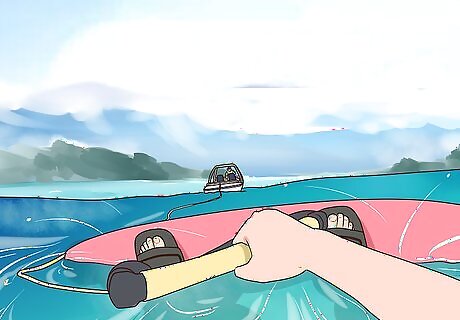
Get in the water. Keep 1 hand on the handle of the tow rope as you scoot off the boat into the water. Take a few moments to get comfortable as the boat begins to move away from you. Once the rope is taut, you can use it to maintain your balance while floating in the water.
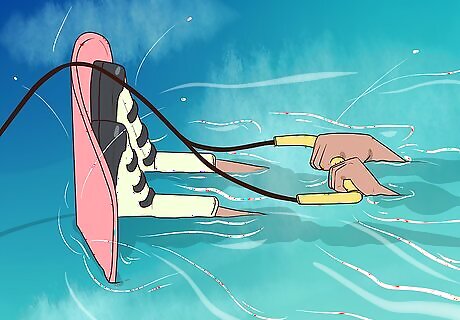
Hold the handle securely. It’s important to maintain a good grip on the tow rope handle so it doesn’t fly out of your hands. That being said, keep your arms relaxed and your knees bent while floating in the water. Never hook or loop the handle around or over any part of your body, as that will make it more difficult to let go of.
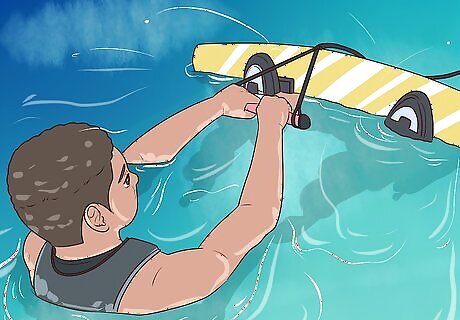
Keep the board on it’s edge in the water. Starting out, the wakeboard should be positioned on it’s edge so that the bottom of the board is perpendicular to the surface of the water. Make sure the edge of the board is slightly above the water. If you try to keep the board flat underneath you, you won’t be able to balance when the boat accelerates.
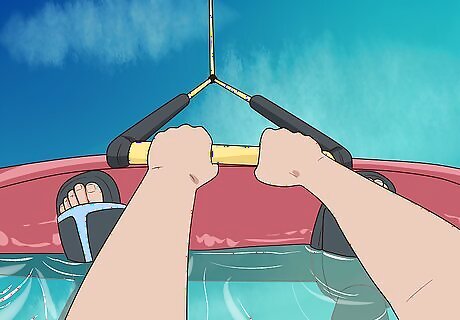
Position 1 arm on either side of your front knee. Before you go wakeboarding, figure out which foot to put forward by having someone gently push you from behind. The foot you step forward with will be the one you put in front on the wakeboard. Once you’re in the water with the wakeboard, place 1 arm on each side of your front knee. Keep your arms bent and the handle close to your chest.
Standing Up
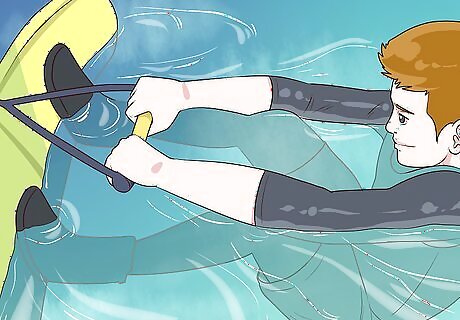
Keep your knees bent as far as you can. Staying close to the board makes it easier to get into an upright position. Keep your knees bent and your ankles close to your body in a squatting position as the boat begins to accelerate.
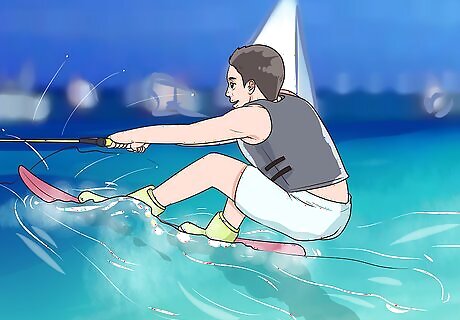
Let the boat lift you. Don’t pull backward against the force of the boat as it picks up speed. Instead, let the boat lift the board onto surface of the water. Avoid bending your arms to bring the handle closer to your torso.
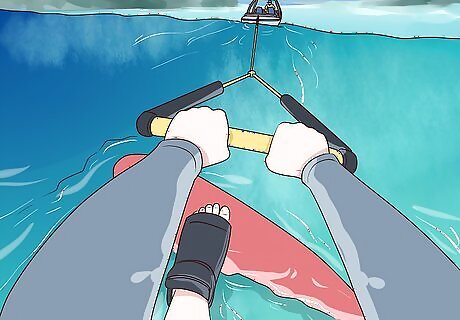
Keep the majority of your weight on your forward foot as you stand up. To get up on the wakeboard, you’ll need keep more than 60% of your weight forward. Once you have gotten up on the board, you can distribute your weight evenly to both feet.
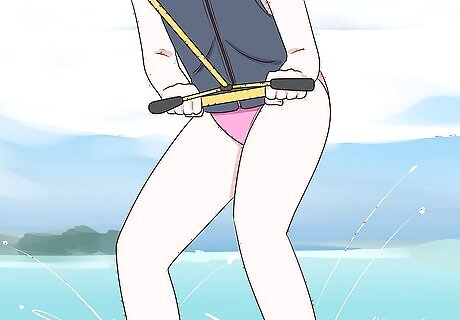
Hold the handle near your hip. To gain more control, keep the rope low and position it near your front hip. Raising it up can unbalance you and make it harder to stay on the board. Grip the handle firmly and keep your elbows slightly bent.
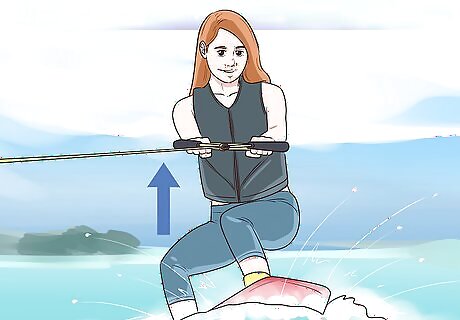
Stand up slowly. Once the force of the boat has popped the wakeboard on top of the water, begin to straighten your legs, keeping your knees slightly bent to absorb some of the impact. Point your forward hip toward the tow-rope handle.
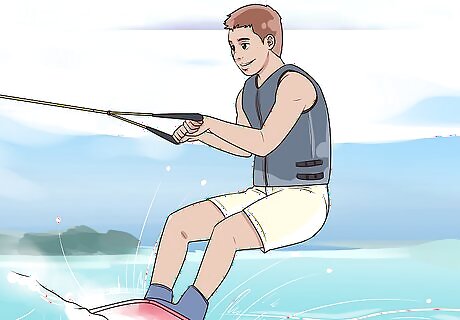
Lean back or forward to shift your weight between your heels and toes. Once you’ve gotten up, get a feel for the wake by leaning back slightly to shift your weight to your heels to set the board heelside on the back edge. Then, practice leaning forward to shift it to your toes to set the board toeside on the front edge. This will help you maneuver and cut back and forth across the water.
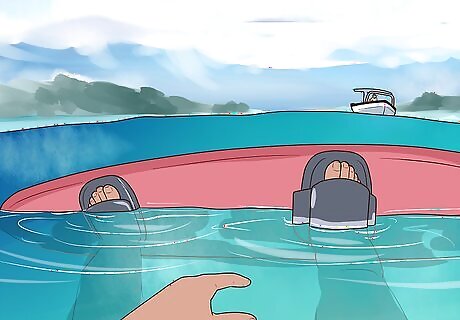
Wait for the boat to come back around if you fall. If you fall or let go of the rope, simply stay where you are. Lift your board halfway out of the water so that all boats in the area are able to see you. The boat driver will turn around to bring you the rope so you can try again.
Troubleshooting
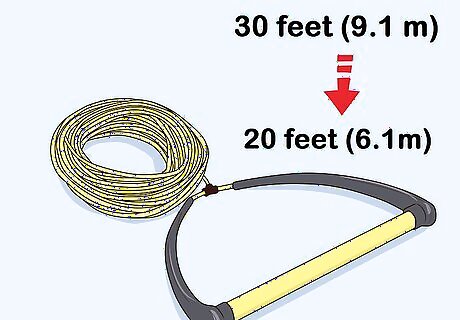
Shorten the rope. If you’re new to wakeboarding, you may have more success with a shorter rope. Switch out the rope for one that’s around 20 feet (6.1 m) long. Attaching it to a ski pylon may also be helpful. Typically, the rope is between 30 and 50 feet (9.1 and 15.2 m) long.
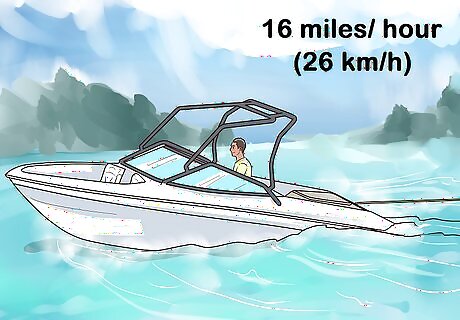
Slow down the boat. While some people think going full-throttle will give you the momentum you need to get up, it actually makes it more difficult. Have the driver of the boat keep the speed under 16 miles per hour (26 km/h) to give you a chance to get up.
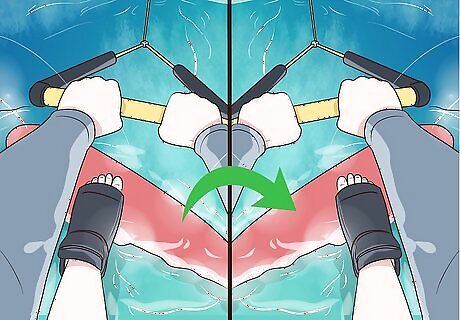
Switch your feet if you’re having trouble. Sometimes, the solution can be as simple as reversing the position of your feet. For instance, if you’ve been attempting to wakeboard with your right foot forward, try it with your left foot forward, instead.




















Comments
0 comment